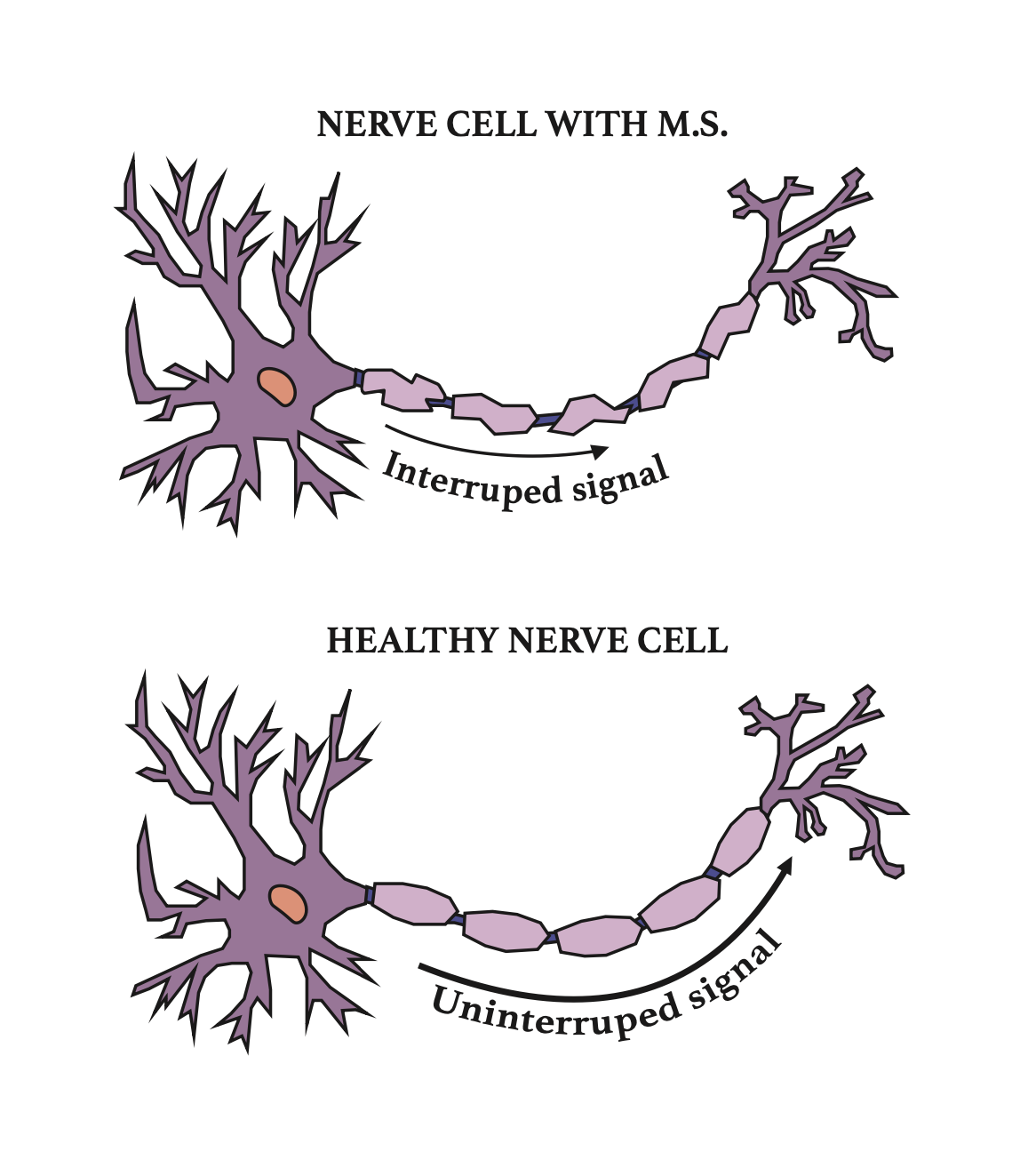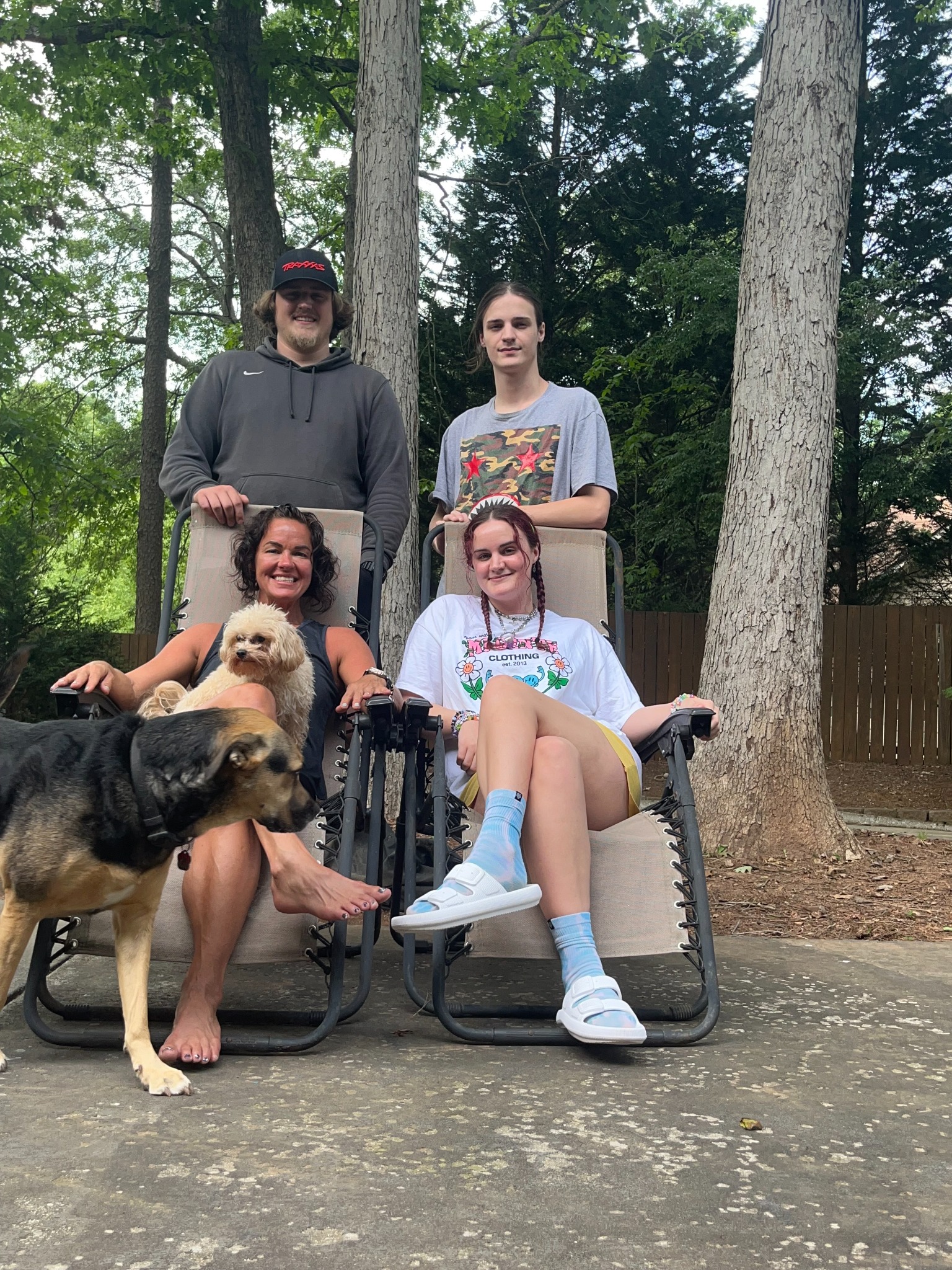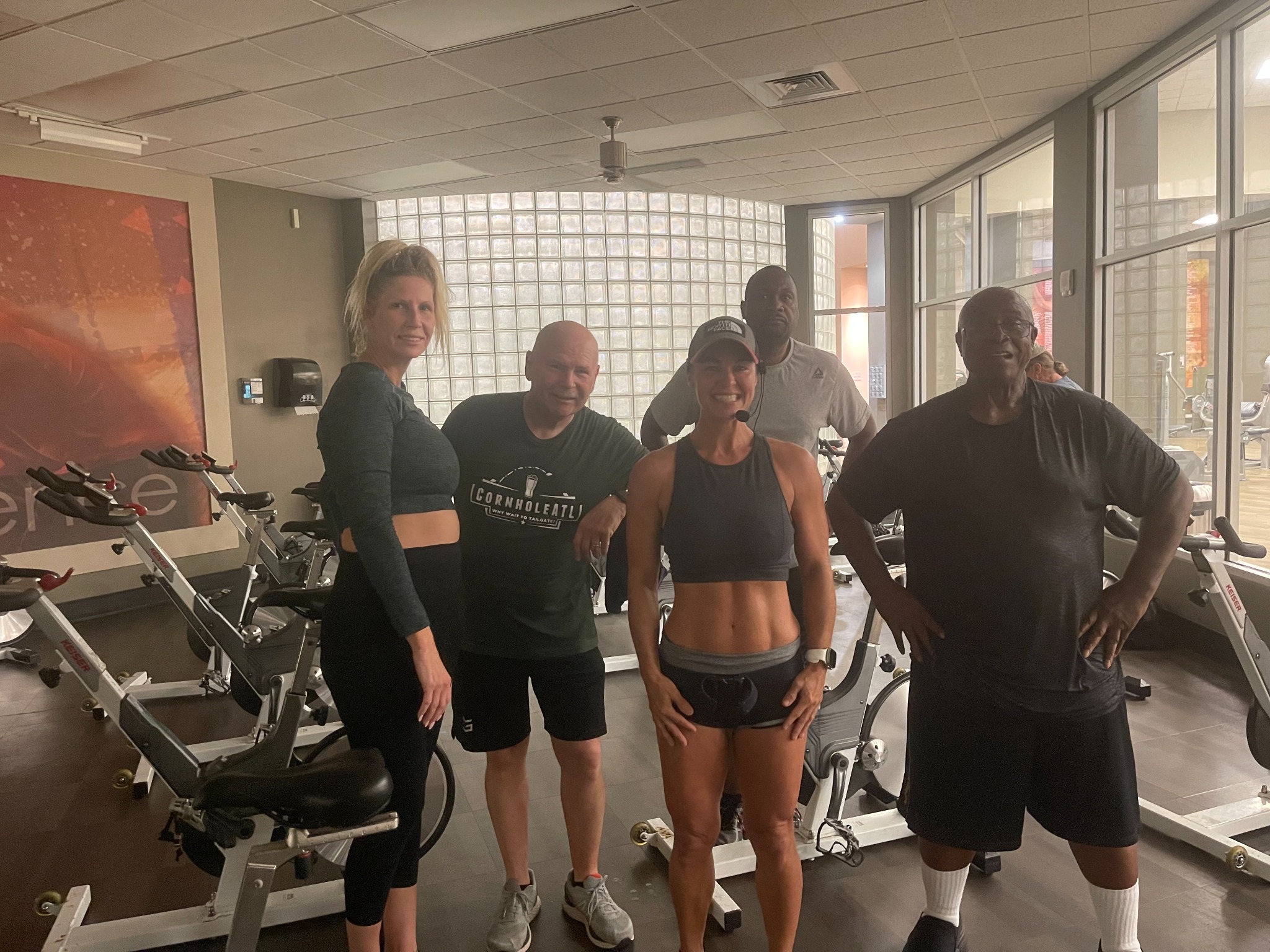First, a Difficult Diagnosis. Then, a Change in Direction.
A 19-year-old University of Tennessee Knoxville student sits in an ER waiting room after an MRI. She’s there because she felt a difference in her body. Now, her life is about to change. “You have multiple sclero- sis,” a doctor says to her.
Jennifer Burnette began to notice changes in her body throughout high school. What started as a subtle tingling in her legs progressed to numbness. In 1998, during her first year at the University of Tennessee Knoxville, she could no longer ignore her symptoms.
“I was sick all the time,” Burnette said. “They couldn’t figure it out.”
By Thanksgiving break of that year, she had been to her general practitioner 12 times, but she never left with a diagnosis.
After break, Burnette and her friends went on a day trip to Gatlinburg, Tennessee, where they filled up their film camera rolls. While reviewing the photos the following day, she noticed that the left side of her smile hung lower than usual.
“I made an appointment that day,” she said.
Her doctor notified her that she needed an MRI as soon as possible.
“That’s when we finally got some answers as to what was actually going on with me,” Burnette said.

Design by Audrey Geib
Changing Direction
Burnette draws parallels between a person’s brain stem and a car’s fuse box, when describing what multiple sclerosis is to people with little knowledge of the dis- ease.
“If a fuse goes out, your radio could go out, or your headlights could go out,” Burnette said.
Multiple sclerosis, commonly known as MS, disrupts communication between the brain and the body. The disease causes the immune system to mistakenly
attack the protective covering of nerve fibers, leading to symptoms ranging from fatigue and muscle weak- ness to vision problems and cognitive issues. For those diagnosed, like Burnette, everyday tasks can become unpredictable battles as the condition progresses in often unexpected ways.
Design by Audrey Geib A healthy nerve cell compared to a nerve cell with MS.
In December of 1998, her first year facing MS, Bur- nette found herself at an impasse, unsure of how to move forward with her life. She returned to school in August with more news from her doctors.
“I came back my sophomore year, and I was told I’d be in a wheelchair by the time I was 30,” Burnette said. “My prognosis was not good.”
That bit of news compelled her to learn everything about her diagnosis and the body, and she changed her major to exercise science.
Because of the unpredictability of her body’s future, Burnette decided to have kids early to achieve her goal of being a mom.
“I just wanted to have a family,” she said. “I wanted to be a mom. So, started having kids right away.”
When she was 20, Burnette had her first of three kids–a girl named Alyssa Driggers. She began attend- ing water aerobics classes while pregnant to keep her body healthy. Eventually, the gym manager approached her to become a certified trainer and to teach.
Photo Courtesy of Jennifer Burnette Jennifer relaxes with her 3 children, Hudson, Landon and Alyssa,
and two dogs after playing a game of cornhole in her backyard.
Driggers said growing up knowing that her mother’s health could change on any day was at times difficult for her and her brothers.
“It was scary growing up, knowing that she might
potentially pass early,” Driggers said. “You never know,
because M.S. can progress so fast.”

Jennifer relaxes with her 3 children, Hudson, Landon and Alyssa, and two dogs after playing a game of cornhole in her backyard. Photo Courtesy of Jennifer Burnette
Raising children with M.S. took a lot of mental for- titude. With a baby and a toddler, Burnette went through a period where she lost all movement in her left leg. Her motivation and strength motivated her children to face their challenges head-on.
“It’s just really inspiring because she never let that hold her back, like never ever,” Driggers said.
Following her ACE certification, Burnette kept run-
ning into situations that motivated her to gain more certifications, complete more classes and learn more about the body. She is now certified in nutrition, Pro- prioceptive Neuromuscular Facilitation (PNF) stretch- ing and licensed massage therapy.
While training people through recovery from injury, she discovered her true passion for helping people.
“It’s learning how to be smart, to work around the obstacles to be able to meet that person where they’re at to be able to help them,” Burnette said. “Everybody can be helped. It’s just figuring out where they’re at and what they need to get started.”

Jennifer smiles with a group of her students after teaching an early morning spin class at L.A. Fitness. Photo Courtesy Jennifer Burnette
'New Body By Jen'
Now, 15 years beyond the age her doctors told her that she would lose the ability to walk, Burnette still works out every day, runs workout classes, coaches weight- loss clients, and helps people get back on their feet after an injury or chronic illness.
One of Burnette’s clients, North Carolina Weslyn Uni- versity baseball pitcher Jacob Hoffman, said Burnette has made all the difference in his recovery from Tom- my John surgery 19 months ago.
“I really owe it to her,” Hoffman said. “With her help, I have been able to bounce back much quicker than anticipated.”
To manage her M.S. daily, Burnette drinks a lot of wa- ter, prioritizes sleep, tries to work out every day, has a diet of high fats and low sugar, and takes vitamins. She has grown to look forward to moving her body daily through her workouts because of the unpredictability of flare-ups.
“You never know when you’re going to have that flare-
up and you’re going to not be able to exercise for a
couple of months, which has happened to me several
times in my life,” Burnette said.
Jennifer answers the question, "What's your why?" in a video uploaded to YouTube. Video Courtesy of Jennifer Burnette
So she surrounds herself with people who help her keep positive and goal-orientated.
“If you don’t keep people around you that keep you sharp, keep you motivated and keep you on the right path, then it’s really easy to get off on an exit and take a
really long detour of life,” Burnette said.
It’s why she couldn’t hold back her smile when she thought of her husband, Alan. If Burnette is having a flare-up, Alan stays by her side to help her.
“I just want to make sure that I’m there every time she wakes up,” Alan Burnette said. “I make sure that what- ever it is she needs, I’m taking care of it, not her.”

Jennifer and her husband Alan jump for a freeze frame photo on the beach in the Domican Republic. Photo Courtesy Jennifer Burnette
Through her brand “New Body By Jen,” Alan Burnette sees his wife’s impact on her clients, not just through physical improvement. At an end-of-life service for one of Burnette’s clients, the family of the man who passed said that if it wasn’t for Burnette’s support, their family would not have rebuilt a rocky relationship and been together.
“That’s just a small example,” Alan Burnette said. “If you don’t love my wife, it’s one of two reasons: either you don’t actually know her, or there’s something seri- ously f****** wrong with you.”
Post a comment